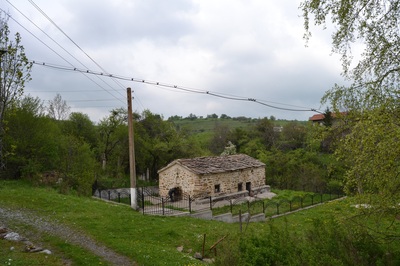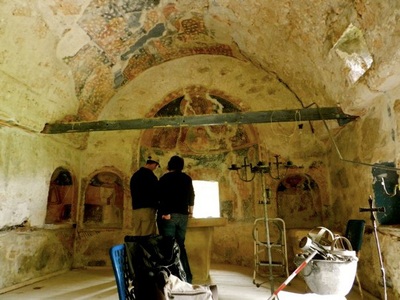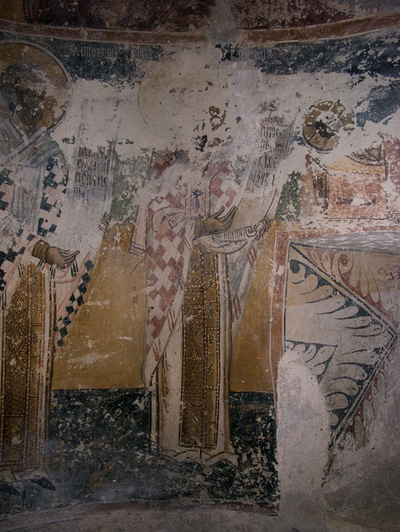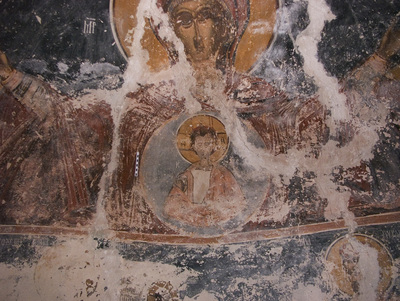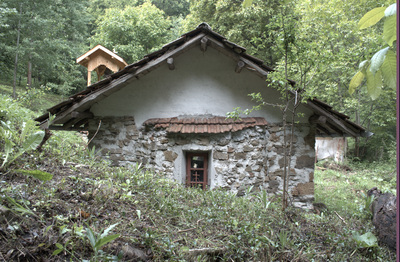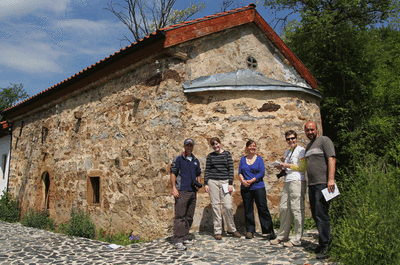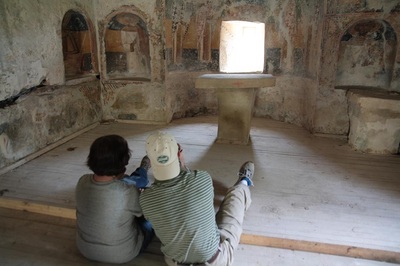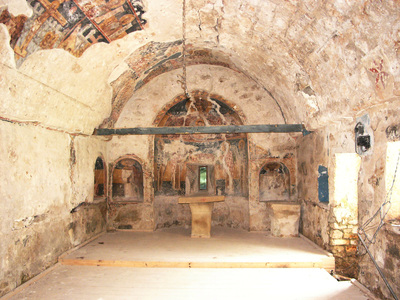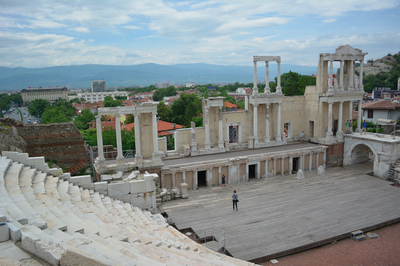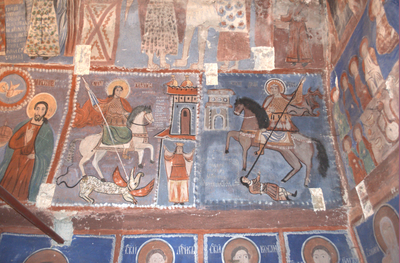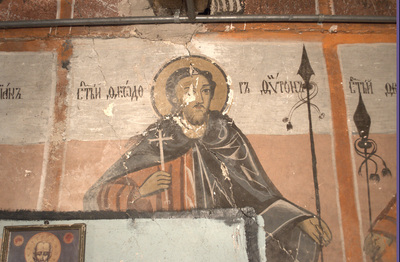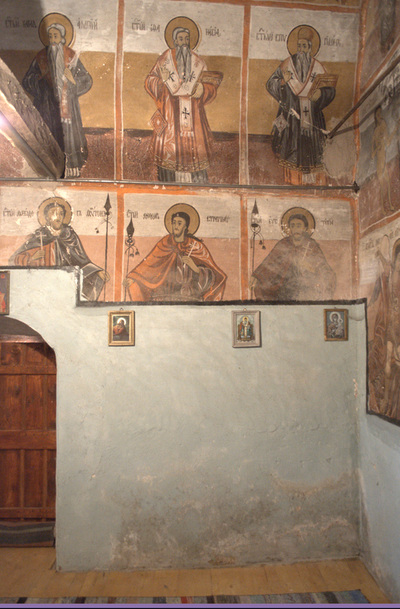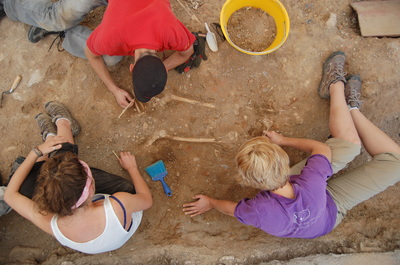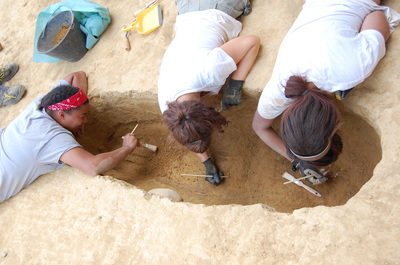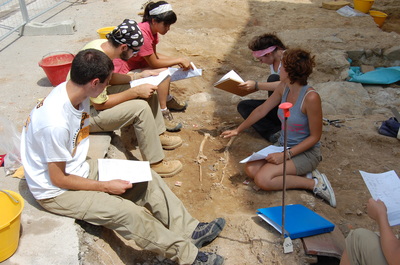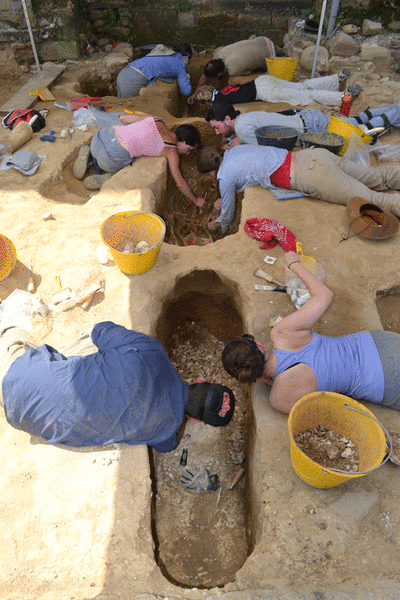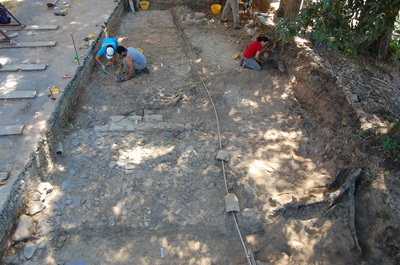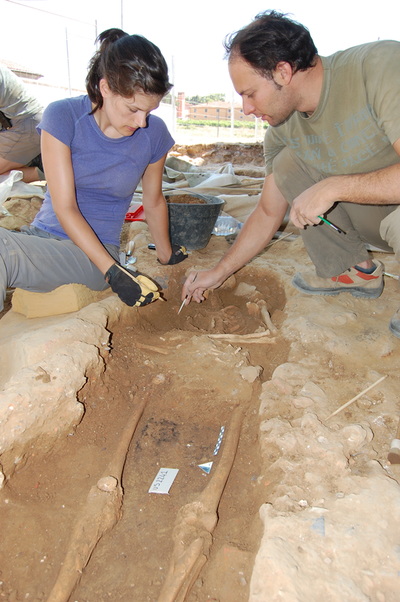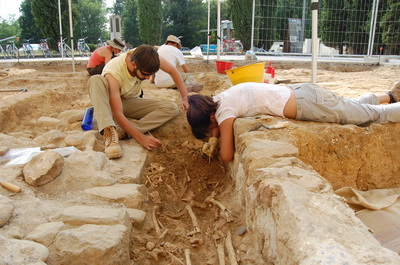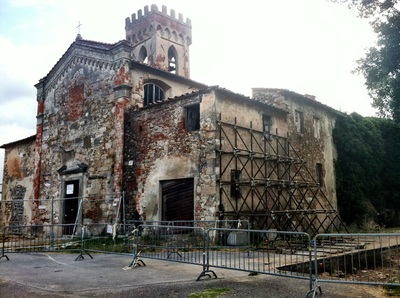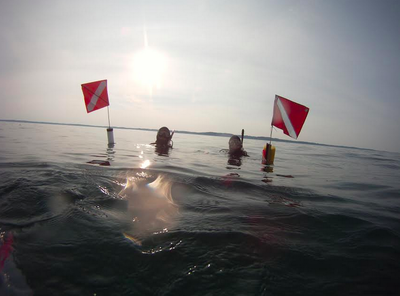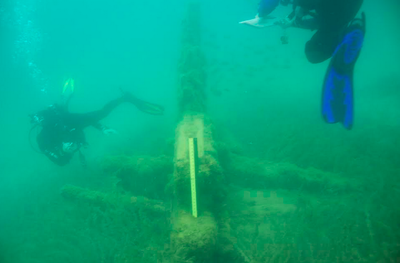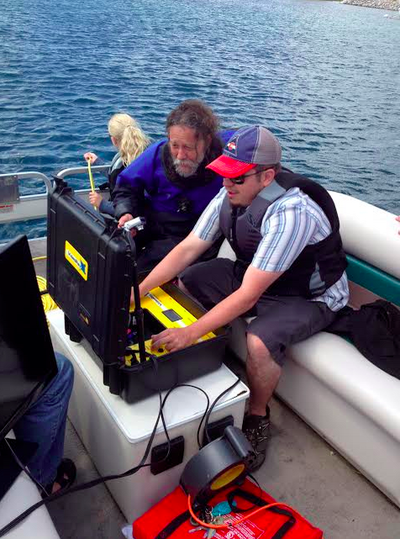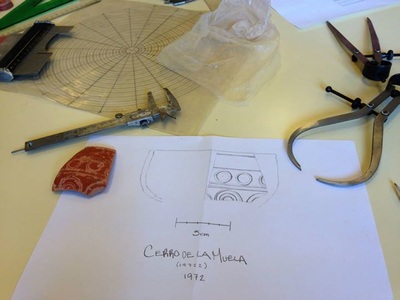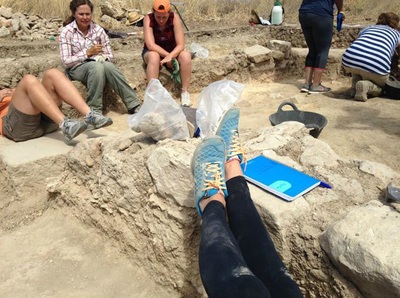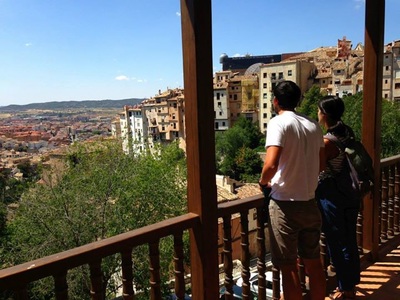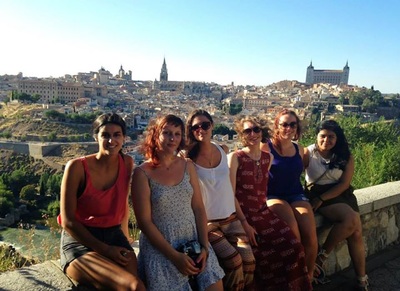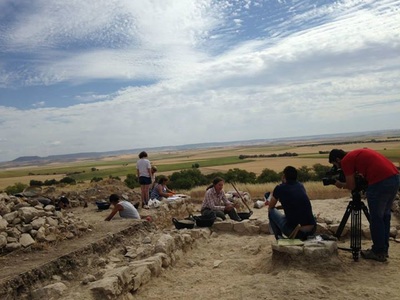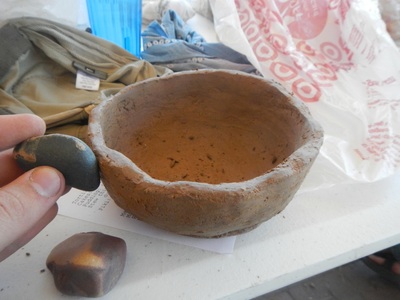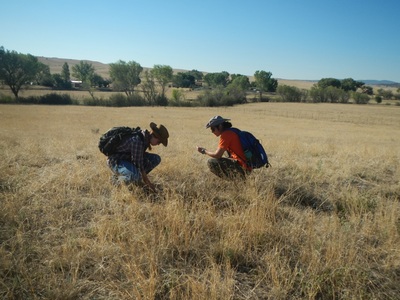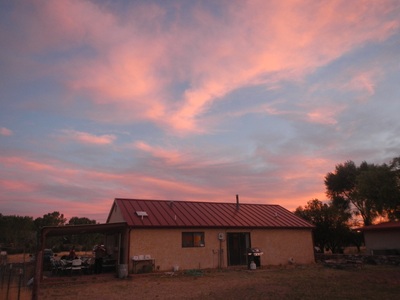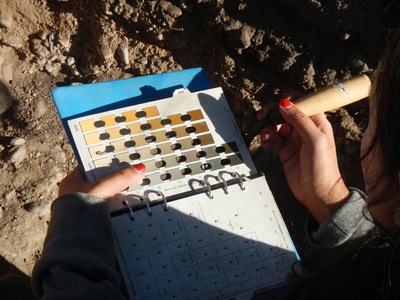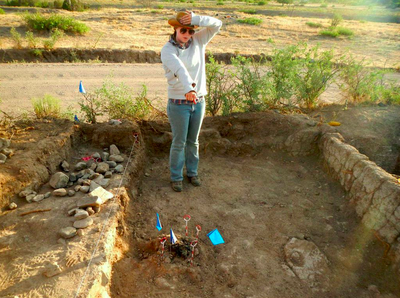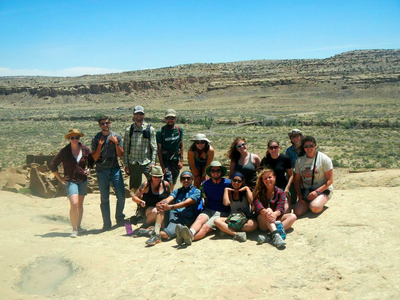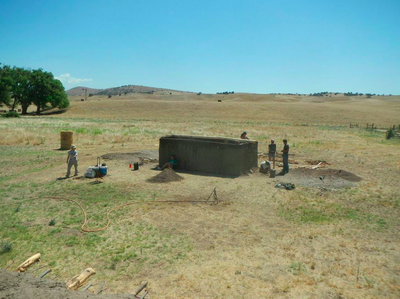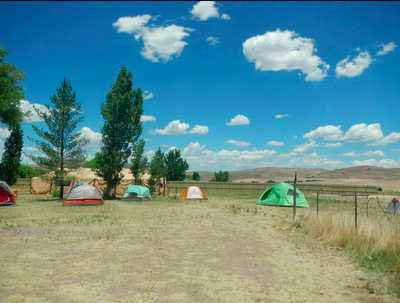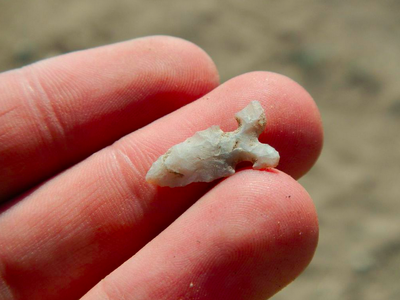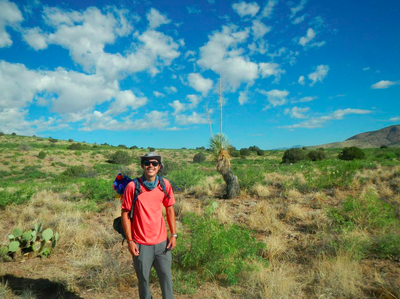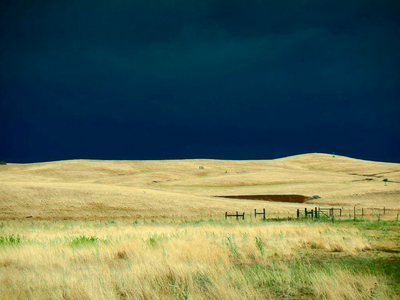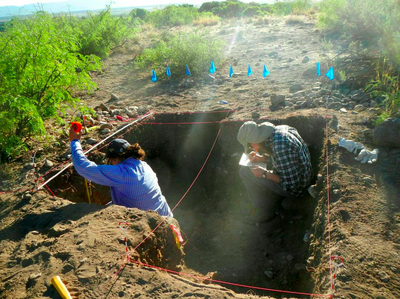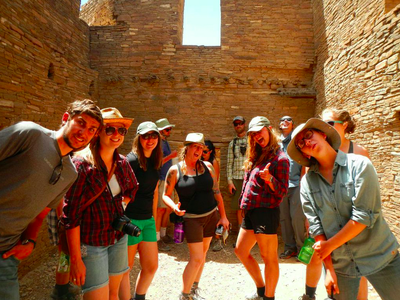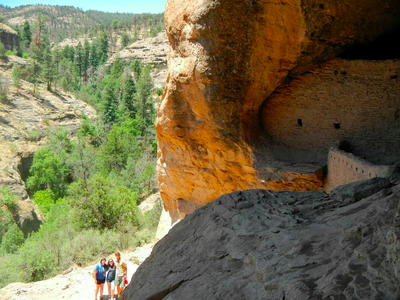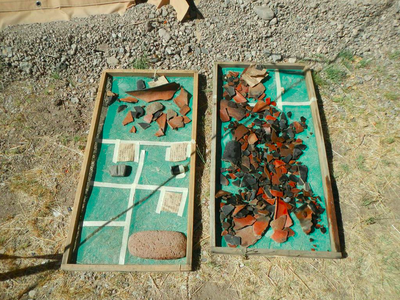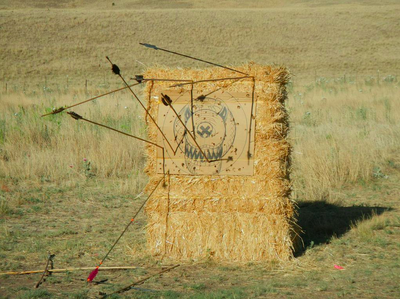* This review was written by Laura. She received her M.Phil in Digital Humanities and Culture from Trinity College Dublin, and is working on her MSc in International Heritage Visualization from the Glasgow School of Art. She worked as a volunteer with Balkan Heritage in Bulgaria from 2011 - 2013.
FIELD SCHOOL & WEBSITE: Balkan Heritage's Fresco-Hunting Photo Research Expedition to Medieval Balkan Churches
LOCATION: Bankya, Bulgaria
AFFILIATIONS: New Bulgarian University, Sofia Photography School
CURRENT PROJECT: Students will take place in an expedition to document abandoned medieval churches/chapels and their frescoes.
STAFF: The field school is directed by Ivan Vasilev (MA) and Vassil Tenekedjiev (PhD).
LENGTH & DATES: The standard project runs from May 16 - 30, 2015, while the extended project runs from May 16 - June 6, 2015.
COST: 1259 EUR (Approximately $1,409 USD)
CREDIT: Up to 9 credits available
APPLICATION PROCESS: Apply online here.
DEADLINES: April 25, 2015
Tell us about your field school experience.
I attended the 2011 and 2012 “Fresco-Hunting” Photo Research Expedition to Medieval Balkan Churches with Balkan Heritage, where we documented at-risk medieval Orthodox church frescoes and architecture. Bulgaria (and much of the surrounding Balkans) was occupied by the Ottomans for 500 years during the medieval period (until 1878), and Christianity was more or less outlawed during this time. For this reason, Orthodox churches from this era resemble small, humble houses from the outside. However, in Orthodox tradition their interiors were entirely painted with frescoes and ornately carved wood iconostases which displayed the icons of the church for worship. Hundreds of these churches dot the landscape in western Bulgaria and eastern Serbia (as well as Greece and Macedonia), but due to their remote locations most of them are nearly abandoned and slowly falling into ruin. This field school makes an important contribution to Balkan Heritage by creating records (photographs, architectural plans and drawings, archaeological illustrations, basic condition reports, field notes, etc.) of these frescoes and churches before they are physically lost forever. As a recent art history graduate at the time with special interest in conservation issues, this field school was an exciting learning opportunity I never had during my formal university training, both in terms of subject matter and this kind of on-site, in situ field work.
Once or twice we went on literal hunts for these largely forgotten churches, traipsing around the Bulgarian countryside with maybe just a couple photos from the 1960s, a circle on the map and advice from any local we could find to guide us. It was exciting—a real treasure hunt! We did not always find what we were looking for, but the journeys reinforced the point that these churches are disappearing heritage and it is imperative to document them before they are completely lost to time.
The field school was based out of Bankya, a suburb of Sofia, Bulgaria’s capital, and most days consisted of field work at a medieval church site in the mountains surrounding Sofia. Field work took place at two or three church sites during each session and a few other similar churches were visited as well. On a typical day we would leave the hotel around 8 or 8:30 and drive to the church we were working at for the day. We would work all day and eat lunch on site. Then we would return to the hotel around 5 or 5:30, have a break and eat dinner around 7 or 8.
The first and last couple days took place at the hotel. Each field school begins with foundational lectures and training before work begins in the field. Not only does this provide you with important theoretical knowledge that underpins future work, it also gives you a good chance to get to know who you are working with in the field. During the last couple days collected data were prepared for presentations and archiving, and some digital illustration techniques were also introduced and practiced.
Each field school has a few free days where you get to visit significant cultural sites and museums as a group with additional time to explore on your own. One free day was spent in Sofia and the other was a day trip to Rila Monastery, a UNESCO World Heritage Site. I appreciated being able to get to know both the lively urban lifestyle in Sofia and the tranquil beauty of the countryside throughout my trip. I learned so much about Bulgaria during my short stay, and it only made me wish I could stay much longer.
The people I met at the Fresco-Hunting field school, both the instructors from Balkan Heritage and my fellow participants, also made the trip exceptional. The instructors at Balkan Heritage are great because they are extremely knowledgeable yet friendly; they offer help without judgment and also respect participants to carry out their work independently if they are comfortable doing so. I personally know Balkan Heritage only partners with not only experienced experts in their field but also only those they consider as friends. This philosophy is critical because you spend your whole days with these people. Not only do you work together but you eat together, travel together, site see together, even party together! This was a huge benefit because everyone got along so well together, so strong camaraderie developed after just a few days and made the experience very rewarding on a personal level.
What skills did you learn?
I learned and improved on a variety of skills working with Balkan Heritage during the Fresco-Hunting field school from good practice photographic techniques for cultural heritage documentation to collaborative teamwork (an important professional skill to develop in itself). Other skills include, but are not limited to, architectural drawing (elevations, floor plans, interior/exterior features, etc.), basic archaeological illustration techniques (hand-drawn and digital), how to measure and draw architectural structures and features, basic site surveying, knowledge and techniques to identify and interpret Bulgarian Orthodox iconography, knowledge of ongoing conservation issues and threats, field journal notation, etc.
How were accommodations?
Accommodations are in a comfortable hotel in the pleasant town of Bankya. It is a sleepy, but pleasant town with a large picturesque park to wander around as well as a few supermarkets, shops, and nice restaurants within easy walking distance. By field school standards accommodations are luxurious. Rooms are shared between two people and have attached bathrooms. I never had problems with hot water or wifi.
Hot Bulgarian food is served at every meal (except on site when sandwiches and salad are provided) and salad, soup and dessert are also often included. Bulgarian food shares common ancestry with Balkan food including Greek, Turkish and Mediterranean cuisine, so it is quite delicious—especially because of the fresh, local produce in the summer.
I'm a vegetarian and never had problems getting enough good food to eat. I know they will accommodate other dietary restrictions as well (just ask them in advance).
What are the Pros and Cons of this Field School?
Pros:
Would you recommend it?
Absolutely. Not only will you effectively enhance your practical skills and gain valuable field experience (I've learned more during ten days with Balkan Heritage than entire semesters it seems like), the immersion in Bulgarian culture and history, the many opportunities to explore diverse urban and rural landscapes, and getting to know the people you are lucky enough to share these priceless learning experiences with are really what make your time with Balkan Heritage unforgettable. I've met incredible people from all over the world and still keep in frequent contact with a number of fellow participants. We still fondly reminisce about our field school experiences from several years ago. While you work hard and learn a lot, there is a lot of fun to be had. From my experience Bulgarians really have the work/play ratio figured out and are always ready with a hilarious story to share. I look forward to working with Balkan Heritage in the future, and I highly recommend any of their field schools to anyone who is ready step outside their normal comfort zone, get their hands dirty, and also have some fun!
Anything else you think readers should know about this field school?
Simply put, the “Fresco-Hunting” Photo Research Expedition to Medieval Balkan Churches with Balkan Heritage changed my life. And I'm not exaggerating. I moved to Bulgaria for two years to continue volunteering for Balkan Heritage after my first Fresco-Hunting field school, and I am preparing to move back after I finish my master's this fall. I fell in love with Bulgaria after just a few days Fresco-Hunting and my fondness only continues to grow. I honestly wasn't sure what to expect from Bulgaria before my first trip, but I was eager to explore an unfamiliar part of the world, meet new people, learn more, and make a small contribution toward preserving Bulgaria's medieval and Christian Orthodox cultural heritage. I could not ask for a better place to achieve each of these goals and better people to work with. From the first welcome dinner—a feast of Bulgarian cuisine complete with traditional Bulgarian wine and rakia (brandy)—to the final goodbyes, the warm and generous Balkan hospitality of the Balkan Heritage team made me feel right at home, yet also eager to explore and excited to learn. Take a chance and spend a few weeks in Bulgaria with Balkan Heritage. You will not regret it.
If you do decide to go, you can't leave Bulgaria without trying banitsa (a delicious savory pastry made with filo dough and stuffed with feta-like cheese) at least once! Also make sure to stop for homemade yogurt made by local farmers during your group visit to the Rila Monastery (a UNESCO World Heritage Site tucked away in the highest mountain range in the Balkans). It is SO GOOD. Enjoy!
FIELD SCHOOL & WEBSITE: Balkan Heritage's Fresco-Hunting Photo Research Expedition to Medieval Balkan Churches
LOCATION: Bankya, Bulgaria
AFFILIATIONS: New Bulgarian University, Sofia Photography School
CURRENT PROJECT: Students will take place in an expedition to document abandoned medieval churches/chapels and their frescoes.
STAFF: The field school is directed by Ivan Vasilev (MA) and Vassil Tenekedjiev (PhD).
LENGTH & DATES: The standard project runs from May 16 - 30, 2015, while the extended project runs from May 16 - June 6, 2015.
COST: 1259 EUR (Approximately $1,409 USD)
CREDIT: Up to 9 credits available
APPLICATION PROCESS: Apply online here.
DEADLINES: April 25, 2015
Tell us about your field school experience.
I attended the 2011 and 2012 “Fresco-Hunting” Photo Research Expedition to Medieval Balkan Churches with Balkan Heritage, where we documented at-risk medieval Orthodox church frescoes and architecture. Bulgaria (and much of the surrounding Balkans) was occupied by the Ottomans for 500 years during the medieval period (until 1878), and Christianity was more or less outlawed during this time. For this reason, Orthodox churches from this era resemble small, humble houses from the outside. However, in Orthodox tradition their interiors were entirely painted with frescoes and ornately carved wood iconostases which displayed the icons of the church for worship. Hundreds of these churches dot the landscape in western Bulgaria and eastern Serbia (as well as Greece and Macedonia), but due to their remote locations most of them are nearly abandoned and slowly falling into ruin. This field school makes an important contribution to Balkan Heritage by creating records (photographs, architectural plans and drawings, archaeological illustrations, basic condition reports, field notes, etc.) of these frescoes and churches before they are physically lost forever. As a recent art history graduate at the time with special interest in conservation issues, this field school was an exciting learning opportunity I never had during my formal university training, both in terms of subject matter and this kind of on-site, in situ field work.
Once or twice we went on literal hunts for these largely forgotten churches, traipsing around the Bulgarian countryside with maybe just a couple photos from the 1960s, a circle on the map and advice from any local we could find to guide us. It was exciting—a real treasure hunt! We did not always find what we were looking for, but the journeys reinforced the point that these churches are disappearing heritage and it is imperative to document them before they are completely lost to time.
The field school was based out of Bankya, a suburb of Sofia, Bulgaria’s capital, and most days consisted of field work at a medieval church site in the mountains surrounding Sofia. Field work took place at two or three church sites during each session and a few other similar churches were visited as well. On a typical day we would leave the hotel around 8 or 8:30 and drive to the church we were working at for the day. We would work all day and eat lunch on site. Then we would return to the hotel around 5 or 5:30, have a break and eat dinner around 7 or 8.
The first and last couple days took place at the hotel. Each field school begins with foundational lectures and training before work begins in the field. Not only does this provide you with important theoretical knowledge that underpins future work, it also gives you a good chance to get to know who you are working with in the field. During the last couple days collected data were prepared for presentations and archiving, and some digital illustration techniques were also introduced and practiced.
Each field school has a few free days where you get to visit significant cultural sites and museums as a group with additional time to explore on your own. One free day was spent in Sofia and the other was a day trip to Rila Monastery, a UNESCO World Heritage Site. I appreciated being able to get to know both the lively urban lifestyle in Sofia and the tranquil beauty of the countryside throughout my trip. I learned so much about Bulgaria during my short stay, and it only made me wish I could stay much longer.
The people I met at the Fresco-Hunting field school, both the instructors from Balkan Heritage and my fellow participants, also made the trip exceptional. The instructors at Balkan Heritage are great because they are extremely knowledgeable yet friendly; they offer help without judgment and also respect participants to carry out their work independently if they are comfortable doing so. I personally know Balkan Heritage only partners with not only experienced experts in their field but also only those they consider as friends. This philosophy is critical because you spend your whole days with these people. Not only do you work together but you eat together, travel together, site see together, even party together! This was a huge benefit because everyone got along so well together, so strong camaraderie developed after just a few days and made the experience very rewarding on a personal level.
What skills did you learn?
I learned and improved on a variety of skills working with Balkan Heritage during the Fresco-Hunting field school from good practice photographic techniques for cultural heritage documentation to collaborative teamwork (an important professional skill to develop in itself). Other skills include, but are not limited to, architectural drawing (elevations, floor plans, interior/exterior features, etc.), basic archaeological illustration techniques (hand-drawn and digital), how to measure and draw architectural structures and features, basic site surveying, knowledge and techniques to identify and interpret Bulgarian Orthodox iconography, knowledge of ongoing conservation issues and threats, field journal notation, etc.
How were accommodations?
Accommodations are in a comfortable hotel in the pleasant town of Bankya. It is a sleepy, but pleasant town with a large picturesque park to wander around as well as a few supermarkets, shops, and nice restaurants within easy walking distance. By field school standards accommodations are luxurious. Rooms are shared between two people and have attached bathrooms. I never had problems with hot water or wifi.
Hot Bulgarian food is served at every meal (except on site when sandwiches and salad are provided) and salad, soup and dessert are also often included. Bulgarian food shares common ancestry with Balkan food including Greek, Turkish and Mediterranean cuisine, so it is quite delicious—especially because of the fresh, local produce in the summer.
I'm a vegetarian and never had problems getting enough good food to eat. I know they will accommodate other dietary restrictions as well (just ask them in advance).
What are the Pros and Cons of this Field School?
Pros:
- This field school can accommodate any level of experience, so it can be a great introduction to field work yet also provides great opportunities for advanced learners to refine their skills and work with artifacts in situ.
- Lessons and instructional materials meet the highest standards. Furthermore, I've never had a problem with anyone's English, so there is no language barrier than could inhibit learning.
- Learning potential is maximized because you get to work directly with experienced archaeologists and conservators in small groups throughout each day both on and off site.
- You learn and apply a variety of documentation techniques at each site.
- It is an unforgettable opportunity to explore new lands and cultures with a great group of people. A variety of excursions are incorporated into the field school program, so you really learn about Balkan culture and its nuances and complexities first-hand. An optional trip to Istanbul is even available!
- Bankya is a quiet family-oriented town and it takes at least a half hour (depending on traffic) to get into the center of Sofia where there is good nightlife, cultural events, etc. Public transportation is somewhat sporadic and slow, so taxis are usually necessary to get into town (although they are cheap for European standards, especially in groups). Most days it is quite impractical to get to Sofia, although there are at least two or three group excursions into the city per session.
- The weather in May is somewhat unpredictable and it can be rainy for extended periods of time—although it can easily be warm and sunny as well.
- It takes at least 40 minutes (and could be up to an hour and a half) each way to reach church sites since they are in remote locations around the mountains outside Sofia. Therefore, there is less time to work on-site, but I'd say the Bulgarian scenery and fun conversations to be had make up for the extra time in transit.
- The hotel occasionally hosts events, so I've witnessed a wedding and a high school prom event during my stays. They can get a bit loud, but it's all part of the cultural experience, right?
- Some days can get quite long since occasionally data must be processed at the hotel after working all day on site.
Would you recommend it?
Absolutely. Not only will you effectively enhance your practical skills and gain valuable field experience (I've learned more during ten days with Balkan Heritage than entire semesters it seems like), the immersion in Bulgarian culture and history, the many opportunities to explore diverse urban and rural landscapes, and getting to know the people you are lucky enough to share these priceless learning experiences with are really what make your time with Balkan Heritage unforgettable. I've met incredible people from all over the world and still keep in frequent contact with a number of fellow participants. We still fondly reminisce about our field school experiences from several years ago. While you work hard and learn a lot, there is a lot of fun to be had. From my experience Bulgarians really have the work/play ratio figured out and are always ready with a hilarious story to share. I look forward to working with Balkan Heritage in the future, and I highly recommend any of their field schools to anyone who is ready step outside their normal comfort zone, get their hands dirty, and also have some fun!
Anything else you think readers should know about this field school?
Simply put, the “Fresco-Hunting” Photo Research Expedition to Medieval Balkan Churches with Balkan Heritage changed my life. And I'm not exaggerating. I moved to Bulgaria for two years to continue volunteering for Balkan Heritage after my first Fresco-Hunting field school, and I am preparing to move back after I finish my master's this fall. I fell in love with Bulgaria after just a few days Fresco-Hunting and my fondness only continues to grow. I honestly wasn't sure what to expect from Bulgaria before my first trip, but I was eager to explore an unfamiliar part of the world, meet new people, learn more, and make a small contribution toward preserving Bulgaria's medieval and Christian Orthodox cultural heritage. I could not ask for a better place to achieve each of these goals and better people to work with. From the first welcome dinner—a feast of Bulgarian cuisine complete with traditional Bulgarian wine and rakia (brandy)—to the final goodbyes, the warm and generous Balkan hospitality of the Balkan Heritage team made me feel right at home, yet also eager to explore and excited to learn. Take a chance and spend a few weeks in Bulgaria with Balkan Heritage. You will not regret it.
If you do decide to go, you can't leave Bulgaria without trying banitsa (a delicious savory pastry made with filo dough and stuffed with feta-like cheese) at least once! Also make sure to stop for homemade yogurt made by local farmers during your group visit to the Rila Monastery (a UNESCO World Heritage Site tucked away in the highest mountain range in the Balkans). It is SO GOOD. Enjoy!
